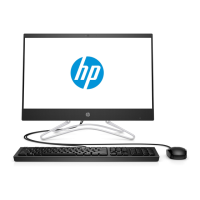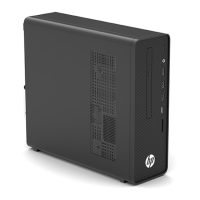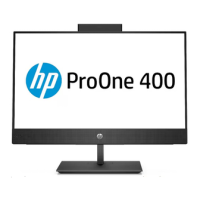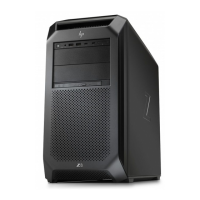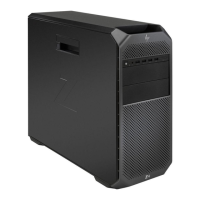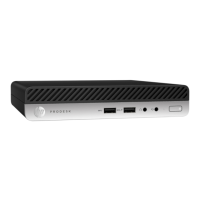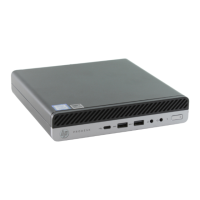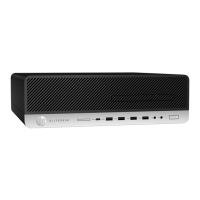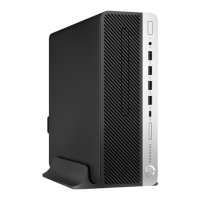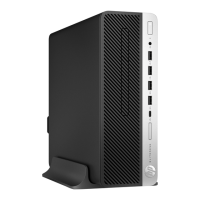Table 5-3 Computer Setup—Conguration (for advanced users) (continued)
Option Heading
Num Lock State at
Power-On
Let you set the Num Lock state after POST. Default is On.
S4/S5 Wake on LAN Lets you control whether the computer wakes from S4 (hibernation) or S5 (soft o) if a magic packet is
received by the NIC. Default is Disabled.
Device Options Allows you to set:
● Multi-Processor (enable/disable). Default is enabled.
● Hyper-Threading (enable/disable). Default is enabled.
● NIC PXE Option ROM Download (enable/disable). Default is enabled.
Thermal Displays current CPU fan speed in rpm.
UEFI HII Conguration Provides conguration of device-supported UEFI HII (Human Interface Infrastructure).
Computer Setup—Boot Options
NOTE: Support for specic Computer Setup options can vary depending on the hardware conguration.
Table 5-4 Computer Setup—Boot Options
Option Heading
POST Hotkey Delay (sec) Setting to a non-zero value adds a delay during POST. This option can be necessary for certain add-in
peripherals that respond slowly or violate specications. Default is 0.
USB Boot Lets you enable booting from a USB device. Default is Enabled.
Network Boot Lets you enable the computer’s ability to boot from an operating system installed on a network server.
Default is Disabled.
Network Boot Protocol Lets you select the network boot protocol. When IPV4+IPV6 is selected, BIOS uses IPV4 rst. Default is
IPv4+IPv6(UEFI).
Legacy Support When Legacy Support is enabled, BIOS loads the Compatibility Support Module (CSM) to support legacy
operating systems. When Legacy Support is disabled, BIOS boots in UEFI Mode without CSM. Default is
Disabled.
Secure Boot Enable Secure Boot to block malware attacks, virus infections, and the use of non-trusted hardware or
bootable CDs or DVDs that can harm the computer. You can also disable Secure Boot to use trusted but
unrecognized hardware (such as older video cards) or to boot from an unrecognized recovery disc. Default
is Enabled.
Platform Key The platform key veries kernels during system start up, allowing you to use alternative operating
systems. Default is Enrolled-MSFT.
Pending Action Default is None.
UEFI Boot Order Species the order in which UEFI boot sources (such as a internal hard drive, USB hard drive, USB optical
drive, internal optical drive, or network adapter) are checked for a bootable operating system image.
Default is OS Boot Manager.
Use the Up and Down arrow keys to select a device. Press F5 or F6 to move the device up or down in the
list. If the device is marked with !, the device is disabled.
IMPORTANT: UEFI boot sources always have precedence over legacy boot sources.
Shortcut to Temporarily Override Boot Order
44 Chapter 5 Computer Setup (F10) Utility
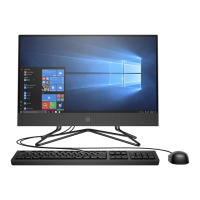
